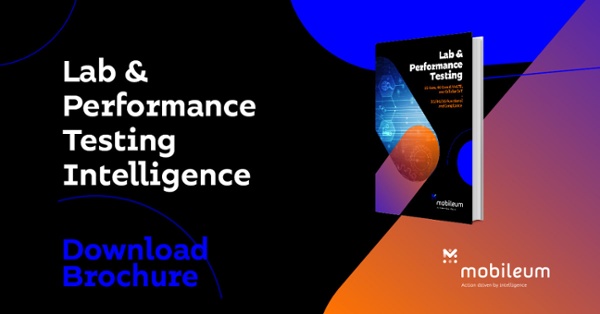As ideas and innovations evolve at a rampant pace, a tremendous amount of hype and expectation arises with them. New profitable business opportunities in fiercely competitive markets across various business segments and industries pressurize telecom operators and the supporting technology providers to deliver the infrastructure and networks necessary to enable new services within extremely short time-to-market. Monetizing such opportunities necessitates fulfilling agreements and sophisticated product strategies, guaranteeing security, providing a flawless customer experience, and most of all, rollouts that work “out of the box”.
Rapid, thorough, and cost-effective pre-deployment lab testing are fundamental to enable both service providers and equipment manufacturers to ensure the network quality and performance requirements of 3G, 4G, and 5G protocols and applications are not compromised by the need for speedy deployments. Identifying glitches, bugs, or malfunctions in the earlier stages, saves not only time and effort, but results in better ROI while at the same time avoid tarnishing the business’s reputation. Therefore, the ability to also test the newly deployed functionality within the production network and withdraw quickly, before it becomes customer affecting if unexpected issues are encountered, is also critical.
Delivering on the complex use cases requires solutions spanning multiple interface applications and demands flexible and speedy testing covering mobile core network service interfaces and a wide variety of technologies such as network testing for 5GC NSA & SA, LTE, EPC, eMBMS, SMS, WLAN Offload, VoLTE, and CIoT. Unlike selective testing, in-depth core network functional testing allows operators to attain a holistic view of every area of the application's code and perform full, end-to-end validation. This ensures that the application code is thoroughly checked for compatibility concerns, which is critical for a successful launch.
Unlike previous technologies, 5G introduces new next-generation standard networks where the core is built on a modular architecture using cloud-native technologies supporting a broad range of use cases, and where individual microservices running in a common shared data environment allow operators to build logical networks with bespoke features (network slices). Moreover, the transition from physical to virtualized networks not only allows technology to evolve over time, but also enables operators to develop, deploy, scale, and upgrade new network functions in an agile, predictable, reliable, and automated manner. The capability to identify potential bottlenecks and regression incompatibilities in the lab domain helps operators to troubleshoot and optimize the performance of their 5G network before deployment.
Besides the support of virtualization, network slicing and service-based architecture, the adoption of DevOps and CI/CD/CT practices results in a highly dynamic environment posing new challenges for operators. In such an environment it becomes even more important to have the capability to run tests that allow the isolation of service issues to ensure that functions can flawlessly interwork despite their interdependent infrastructure. This is even more critical in a multi-vendor environment where the evolution of the network is non-uniform owing to each vendor upgrading their network functions at a different pace. With 5G it is reasonable to expect that the network will change every few weeks, and manual validation that traditionally took months is no longer viable, making continuous automated testing a must to cope with the new test volumes and speed of changes.
A services-based interface lab testing is fundamental to ensure the extensive coverage of 5G services and functions. To be effective, tests should encompass access and mobility, the authentication servers, location services and management, the gateway mobile location center, network repository functions (identities, location, network slices served, service instances, and operational statuses), policy and control function, session management, and the unified data management service.
New radio technology and new frequency bands introduced by 5G make smartphones even more complex, with the first 5G devices supporting Dual Connectivity with both LTE and 5G. On top of that, as the Internet of Things (IoT) becomes part of our daily lives, networks become flooded with an ever-increasing number of connected device types. Due to the nature of IoT, operators must ascertain that their networks can react in a timely manner to both expected and unexpected events before launching new IoT services, in addition, the testing of security issues related to IoT is also very important.
3GPP has added specifications to integrate Cellular Internet of Things/Narrowband Internet of Things (CIoT/NB-IoT) communications into the overall network, making it essential to thoroughly test CIoT network interface functionality and performance. Successful testing methods use client simulators or provision a server emulator with the 4G and 5G interfaces necessary to support end-to-end testing and Control Plane and User Plane optimizations specified for CIoT.
By the same token, Machine-to-Machine (M2M) or Machine-Type Communications (MTC) have become a key and growing segment in cellular mobile packet data networks, whose specifications provide the ability to differentiate MTC devices, allowing operators to handle them selectively in overload and congestion situations. Testing the Cellular Serving Gateway Node (C-SGN) already in the lab is a pre-condition in MTC analytics due to the expected robust growth in revenue segments such as data integration, data storage, core analytics, data presentation, and associated professional services, which together enable analytics to be used in M2M services and these are expected to grow significantly in the coming years.
To sum up, a rigorous automated testing and Quality Assurance (QA) process has greater implications today than ever before. Having true closed loop processes to test, monitor, and measure the network performance, aligned with the ability to detect, decipher, and remove glitches and bottlenecks in test resources, allows operators to have the visibility required to validate and assure new services as well as remove barriers that often limit the speed at which they can introduce new technologies and services. It is essential that these processes are put in place before moving to a full CI/CD/CT deployment model.




Let Us Know What You Thought about this Post.
Put your Comment Below.